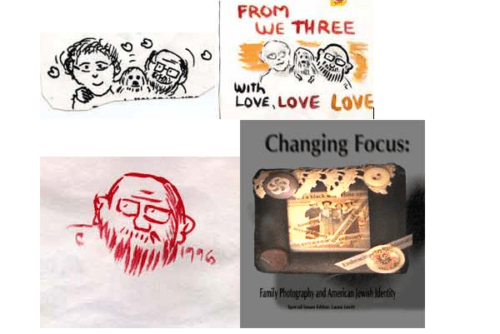Effects of Poverty
Mental illness, substance use, prison history, domestic violence, and youth aging out of the foster care system are recognized causes of homelessness. The single adult system is utilized by three sets of users: chronic, episodic, and transitional short-term users. Chronic and episodic use is often associated with psychiatric disability, substance abuse, and prison history, while transitional short-term use is often associated with temporary unemployment.1 According to a study by the US Conference of Mayors in 2005, approximately 16 percent of the homeless population suffers from a mental illness.2 In 2006, the National Coalition for the Homeless reported that the average rental cost of a one-bedroom apartment ($715 per month), amounted to 113 percent of an individual’s supplemental security income. The Community Mental Health Act of 1963, which set the stage for the mass release of long-term psychiatric patients from state hospitals into single room occupancies (and referred to community health centers for treatment and follow-up), was a pivotal measure in the explosion of homelessness, as a wave of homeless individuals living with mental illness without support systems and services very quickly saturated the streets of NYC and other urban centers.
Given the recent history of classifying homosexuality as a mental illness and the practice of committing queer individuals to mental institutions prior to the 1963 change, it is likely that a disproportionate number of queers were washed on to the streets in this wave of new homelessness. In addition, according to the National Alliance on Mental Illness, “most research suggests that GLBT people are likely to be at higher risk for depression, anxiety, and substance use disorders. One study found that GLBT groups are about two-and-one-half times more likely than heterosexual men and women to have had a mental health disorder, such as those related to mood, anxiety, or substance use, in their lifetime […]. The reason for these disparities is most likely related to the societal stigma and resulting prejudice and discrimination that GLBT face on a regular basis, from society at large, but also from family members, peers, co-workers and classmates.”3 Jay’s anecdotal evidence as to who comprises the queer homeless shelter resident population reinforces these findings and reemphasizes the need for data: “substance use and mental illness feature for a good percentage of queers in the shelter system. It does appear to be more women, and there are a lot of trans, youth, and older people.”
In the sea of data about need and poverty there is growing acknowledgement of new economic indicators. Chief among them is data that relate to food poverty and hunger. Applying a food poverty lens illustrates both the magnitude of and the urgency for prioritizing the problem on every community’s agenda. Throughout the nation, people who struggle to make ends meet are faced with impossible basic living expense choices: rent, medical costs, or food.4 Typically, food is sacrificed for the sake of keeping a roof over one’s head. Throughout the country, the majority of people who access services at soup kitchens and food pantries live in rented accommodation.5 Escalating living costs makes it impossible for an increasing number of people to afford all the basics. For example, from 2003 to 2008 basic living costs in the New York metro area increased as follows: food by 22 percent, fuel and utility by 54 percent, housing by 23 percent, medical care by 19 percent, and transportation by 22 percent. During the same time period the number of New Yorkers having difficulty affording food doubled from approximately 2 million in 2003 to approximately 4 million (in November 2008).6
During Jay’s time on the street, hunger was a constant companion:
Soup kitchens were how Sheila [Jay’s partner for the past two decades] and I survived. We used to stand on line at a soup kitchen in Midtown every day. And the lines were not as long then as they are now. And today it’s people from every walk of life: men, women, young, old, children, people in suits, and the line goes on and on. I don’t know what people would do without that place. We got on that line because we were hungry—it wasn’t to socialize, it was because of a very basic need, we were that hungry and we knew we would get a lot of food, no questions asked. When I was really sick, weighing about 94 pounds, Sheila used to hold me up and carry me, and one day we were on the line and outreach workers came to talk to me. They had a doctor talk to me and they explained to me that I was going to die unless I went into a shelter. They talked me into going into one of the assessment shelters and they helped me to get into the program shelter that ultimately helped me to turn things around. Sheila was not on the streets, she was in a shelter. I tried really hard to make sure Sheila was never on the streets.
Jay highlights a vital point. Because food poverty casts a larger net than other aspects of poverty, the emergency food system often serves as the entry point to the world of social services, benefits, and programs. Because the emergency food system is one of the most underfunded areas of the nonprofit sector, it is largely operated by faith-based organizations that rely almost entirely on volunteers. In some states proselytizing is prohibited, but in others it is not. Either way, it is likely that many queers do not feel comfortable in settings that have traditionally alienated and condemned our community.
Food poverty data also illustrates an emerging, troubling trend—the wave of senior hunger that is set to ripple across the country as baby boomers age into retirement. Broader issues that relate to queer seniors are covered in other sections of this journal issue (see Amber Hollibaugh’s article “2, 4, 6, 8: Who Says that Your Grandmother’s Straight?”). In terms of food poverty, seniors already rank as one of the majority groups relying on emergency food. The expectation is that the numbers of seniors on soup kitchen and food pantry lines will balloon once the baby boomers age in, as they are the first generate to age in without savings, and even before the income drop that retirement will bring many are already reporting difficulty affording food. For example, approximately one half (49 percent) of New Yorkers ages 50 to 64 experienced difficulty affording food in 2008, double the amount in 2003 and up from 44 percent since 2007 (an 11 percent increase).7 Prioritizing the issue of elderly poverty, food poverty, and homelessness is an example of how the queer community could and should be setting an agenda that not only projects the queer voice but plays a leadership role in arenas of important social change. To do otherwise makes the needs of existing and future generations of queer seniors invisible, putting them at risk of substandard care and services.
As a baby boomer, Jay has a personal interest in seeing the needs of queer seniors attended to and she understands all too well the dangers of invisibility:
As a baby boomer, I would say I feel discouraged by what our community is not doing. Seeing elders on soup kitchen and food pantry lines is disheartening and makes me worry about my future. Is there even a place in our community where queer elders, or queers of any age, can go to get food? All the talk I have heard about housing for elders seems to be for people who have money, but what about people who are poor? The idea of having to go to group homes or shelters where being queer is not acceptable, the thought that you might be separated from your partner in these places … I wonder what’s going to happen to me when I won’t be able to work or do anything and what will Sheila do: Who will take care of us? And what about the hundreds, the thousands of others who don’t even have the connections within the queer community that I have?
What Jay fears the most about growing old is a level of poverty that would bring her back to a world she only recently escaped. In total, Jay estimates that she was homeless for approximately one quarter of a century, the last ten years of which were the most difficult. “The drug addiction was bad and I had been introduced to crack—something nobody should ever be introduced to. The alcoholism was wasting me and in all those years I never went into a shelter until some friends who were concerned about my health took me to one of the assessment shelters. I went in scared and I had every reason to feel that way—all the stories I had ever heard about the lack of safety for queers in the shelter system were true.” The irony of invisibility is how susceptible it makes queers to harassment and assault, as the lack of regard and respect from official corners paves the way for discrimination and abuse. Jay talks freely about her own struggle with invisibility as she recalls how the feeling that nobody in the world cared—nobody saw her, both in the shelters and on the street—was the root of a desperate sense of loneliness that kept her company for those twenty-five years: “What people see is not you. Being queer and a woman on the streets comes with such a weight. Society puts that burden on you. You feel how people see you. From being on the streets I remember seeing the absolute fear on people’s faces when they encountered me. People are afraid of the homeless but it’s different for women. I think the image of a homeless man is perceived as more of a physical danger, but the image of a woman on the streets scares people because it makes it more real—women are not supposed to be on the street, so seeing a homeless woman makes you think it’s your mother or your sister; it makes it feel like it could happen to anybody.”
Creating Change and Visibility
On one occasion, during the time when she was still living on the streets, upon realizing it had been months since her last human interaction because people regularly walked by without engaging or acknowledging her presence, she found herself walking into the middle of the street and crying as she begged aloud for someone, anyone to stop. “Somebody, somebody please talk to me.” Nobody did. “That’s why I do this work,” she explains, “because nobody should ever feel the way I felt, like nobody cares.”
Conditions improved at the last shelter Jay stayed in. When she sobered up she inserted herself into the community and got support from the staff, including the shelter director. Being queer was still an issue but it was here that Jay not only participated in her first pride celebration but began the work of organizing other queer shelter residents, albeit reluctantly at first. I had met Jay during a standard shelter visit to facilitate the election of a group of resident leaders some months prior. Already aware of a large population of gay men and transgender women at one of the men’s shelters, I was intrigued to discover a large community of lesbians at Jay’s shelter. Within days I convinced Jay to venture into the heart of the queer community. With no specific plan in mind, it seemed necessary to establish some connection, and in the end we settled on the idea of participating in the Pride March. It was fitting in the first year that the Irish Lesbian and Gay Organization offered to share their spot with the shelter group—if ever there was a group that understood the relevance of visibility in a parade it was ILGO. Jay’s reluctance gave way to interest and finally excitement and purpose as she organized participants from her shelter to get involved. They collectively designed hand-painted t-shirts and signs, organized the first pride celebration in a homeless shelter (it was the first time a “pride” banner decorated the walls of the shelter), and Jay coordinated a day trip for fellow shelter residents so they could get free photos to post on a pride-themed bulletin board at the shelter. The excitement was palpable, even on the day of the march with each sizzling step down the avenue under a blazing sun. And when the contingent finally entered the Village to the hollering sea of queers lining the sidewalks and swinging off the fire escapes, there were tears. There was a moment, finally, of belonging. Jay has not looked back since. It was not long before she found a seat on the board of the newly formed QEJ, and became the director of the Shelter Project. And every June, Jay maintains the tradition of organizing a contingent of shelter residents in the Pride March, wondering how large the group will have to become before the proclamation on their t-shirts, “Housing is a Queer Issue,” will be adopted by the mainstream queer organizations.
Jay believes there is much more work to be done; the shelter project’s support groups and the transgender policy are important first steps but they are not enough. The next step is the creation of a queer shelter that would provide a safe space and relevant programming. When presented with the concern that some in the queer community might negatively view the idea of a queer shelter as segregation, Jay’s response is quiet and immediate, “I would ask them if they have ever been in the shelter system. This isn’t about politics. It’s about survival.”
When I ask Jay how long she will keep doing this work the response is mixed:
When someone else starts doing this, I’ll think about stopping. When I was in the shelter there was nothing for those of us who are queer. I never felt comfortable, on the streets or in the shelter system or in my own skin, and I want other people to feel like there is a hand out. You’re sinking in a pool of bureaucracy and someone has to throw out that life preserver. QEJ definitely got that. And yes, I feel like walking away sometimes but then there’s the hook—I’ve been there, I know what it’s like. How can I turn my back when I know what it’s like to have people turn their back on me? I can’t allow homeless voices to be stifled and I can’t allow shelters not to have queer pride. I knew even as I was putting my own life back together and getting out of the shelter that I would have to come back and help other people put the pieces of their lives back together. If my experiences can help anybody, if they can catch on to even one word I say, I’ve done my job. People just need a chance. That’s all I needed. I knew how to survive but I didn’t know how to live. That’s what I try to give everyone. I have this dream about five or six times a year about walking up the doors of the shelter I used to be in and seeing a sign that reads, “CLOSED DUE TO LACK OF HOMELESSNESS.” That’s what I want: I want that dream to come true.
- Denis Culhane, “Prevalence of Treated Behavioral Disorders among Adult Shelter Users: A Longitudinal Study” (with June M. Averyt and Trevor R. Hadley), American Journal of Orthopsychiatry (1998). [↩]
- The United States Conference of Mayors, Hunger and Homelessness Survey (PDF). (2005). [↩]
- Wendy B. Bostwick, Mental Health Issues among Gay, Lesbian, Bisexual, and Transgender (GLBT) People (Arlington: National Alliance on Mental Illness, 2007). [↩]
- Feeding America, Hunger in America. (Washington: Feeding America, 2006). [↩]
- Hunger in America, 2006. [↩]
- Food Bank For New York City, NYC Hunger Experience Update (PDF). (New York: Food Bank For New York City, 2008). [↩]
- New York City Department of City Planning, New York City Population Projections by Age/Sex and Borough, 2000—2030 Report (New York: New York City Department of City Planning, 2006). [↩]




